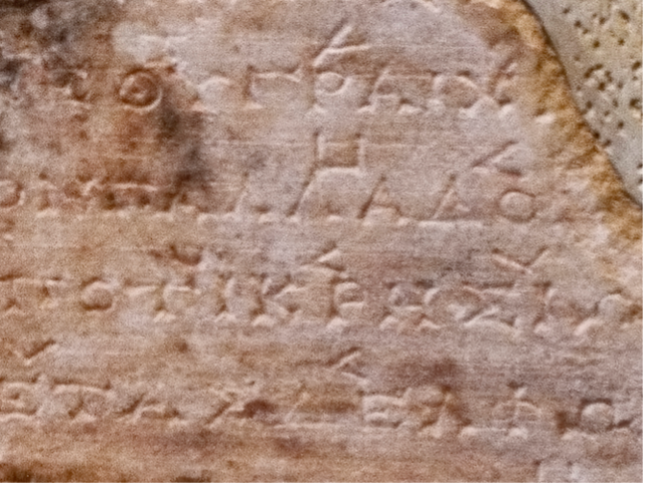0. Introduction
1. Finding and study of the texts

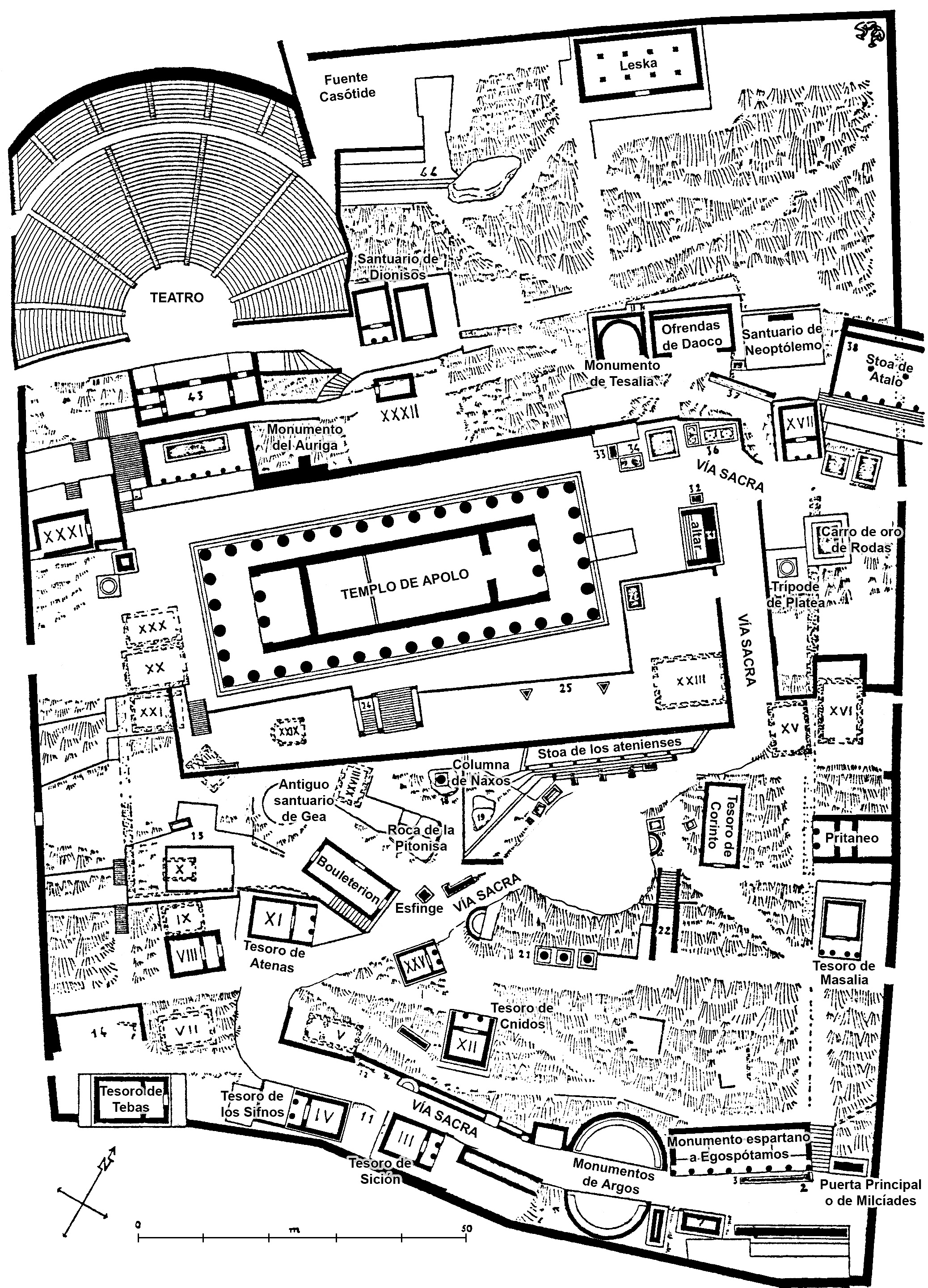
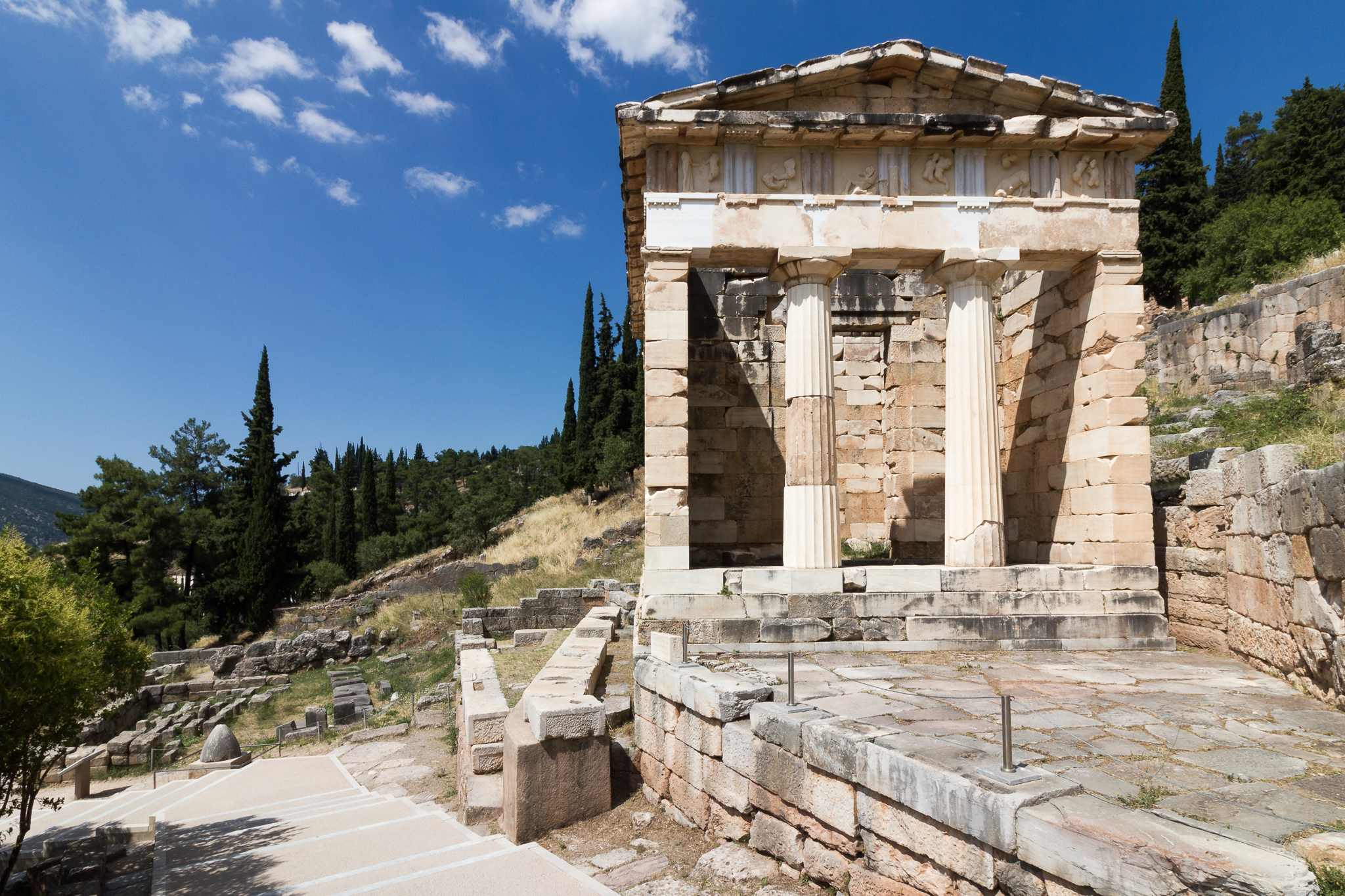

2. Text and Translation of the hymns
[Παιὰν καὶ προσόδιον] εἰς τὸν θεὸν ὃ ἐ[πόησεν Ἀθ]ήναιος. [6]
[Κέκλυθ’ Ἑλικ]ῶ̣να βαθύδενδρον αἳ λάχετε Διὸ]ς
ἐ[ρι]βρόμου θύγατρες εὐώλ[ενοι,] μόλετε, συνόμ-
αιμον ἵνα Φοῖβον ὠιδα[ῖ]σι μέλψητε χρυσεοκόμαν,
ὃς ἀνὰ δικόρυνβα Παρνασσίδος τᾶσδε πετέρας ἕδραν’ ἅμ’
5 [ἀ]γακλυταῖς Δελφίσιν Κασταλίδος εὐύδρου
νάματ’ ἐπινίσεται, Δελφὸν ἀνὰ [πρ]ῶνα μαν-
τεῖον ἐφέπων πάγον·
[Ἢν] κλυτὰ μεγαλόπολις Ἀθθὶς εὐχα[ῖ]σ̣ι φερό-
πλοιο ναίουσα Τριτωνίδος δά[πε]δον ἄθραυστον· ἁγί-
οις δὲ βωμοῖσιν Ἅφαιστος αἴθε[ι] νέων μῆρα ταύ-
10 ρων· ὁμοῦ δέ νιν Ἄραψ ἀτμὸς ἐς [Ὄ]λ[υ]μπον ἀνα-
κίδν[α]ται· λιγὺ δὲ λωτὸς βρέμων αἰόλοις
μ̣[έ]λεσιν ὠιδὰν κρέκει· χρυσέα δ’ ἁδύθρου̣[ς
κί]θαρις ὕμνοισιν ἀναμέλπεται·
15 ὁ δὲ [Τεχνι]τ̣ῶν πρόπας ἑσμὸς Ἀθθίδα λαχὼ̣[ν
τὸν κιθαρί]σει κλυτὸν παῖδα μεγάλου [Διὸς ἀ-
είδομεν πα]ρ’ ἀκρονιφῆ τόνδε πάγον, ἄμ[βροτ’ ἀ-
ψευδέ’ ὃ]ς πᾶσι θνατοῖς προφαίν[εις λόγια,]
[τρ]ίποδα μαντεῖον ὡς εἷ̣[λες, ἐχθρὸς ὃν ἐφρ]ού-
20 ρει δράκων, ὅτε τε[οῖσι βέλεσιν ἔτρ]ησας αἰ-
όλον ἑλικτὰν [φυάν, ἔσθ’ ὁ θήρ, συχν]ὰ̣ συ-
ρίγμαθ’ ἱεὶς ἀθώπε[υτ’, ἀπέπνευσ’ ὁμῶς· ὣς] δ̣ὲ Γαλα-
τᾶν Ἄρης [βάρβαρος, τάνδ’ ὃς ἐπὶ γαῖα]ν ἐπέ-
ρας ἀσέπτ[ως, χιόνος ὤλεθ’ ὑγραῖς βολαῖ]ς.
Ἀλλ’ ἰὼ γένναν [. . . . . . ]ν θάλος φιλόμ̣[αχον
[. .]ε δάμοιο λοι ̣[
[. .]ρων ἐφορ.[
. . .
Title: [The paian and prosodion] to the God [written by Ath]enaios
Listen, fair-armed daughters of loud-thundering
Zeus whose appointed place is deep-wooded Mt. Helikon,
come here to praise in song your brother Phoibos
of the golden hair, who ascends the twin-peaked abode
5 of this Parnassian rock and with the famous Delphic women
visits the abundant waters of Kastalia’s spring,
he who frequents the oracular seat on the Delphic hill.
Behold the famous, mighty city of Athens, dwelling
in worship of warrior Athena on unshaken ground.
10 On holy altars Hephaistos burns the thighs of bulls;
As the smoke of Arabia [7] goes up to Olympus;
high and clear the reed pours forth lively melodies
and the sweet-voiced golden lyre resounds to our hymns.
15 We, the whole swarm of singers who have come from Athens,
celebrate the famous kitharode, son of mighty Zeus,
beside this snow-capped peak,
who declares infallible oracles to all humans.
You seized the prophetic tripod, which the hateful snake guarded,
20 when you shot the wriggling, coiled shape with arrows
until the beast, emitting many hideous hisses, breathed its last breath.
Likewise the foreign army of Gauls which brutally
attacked this land perished in the wintry snowstorms.
Hail, noble Son of (Zeus)…
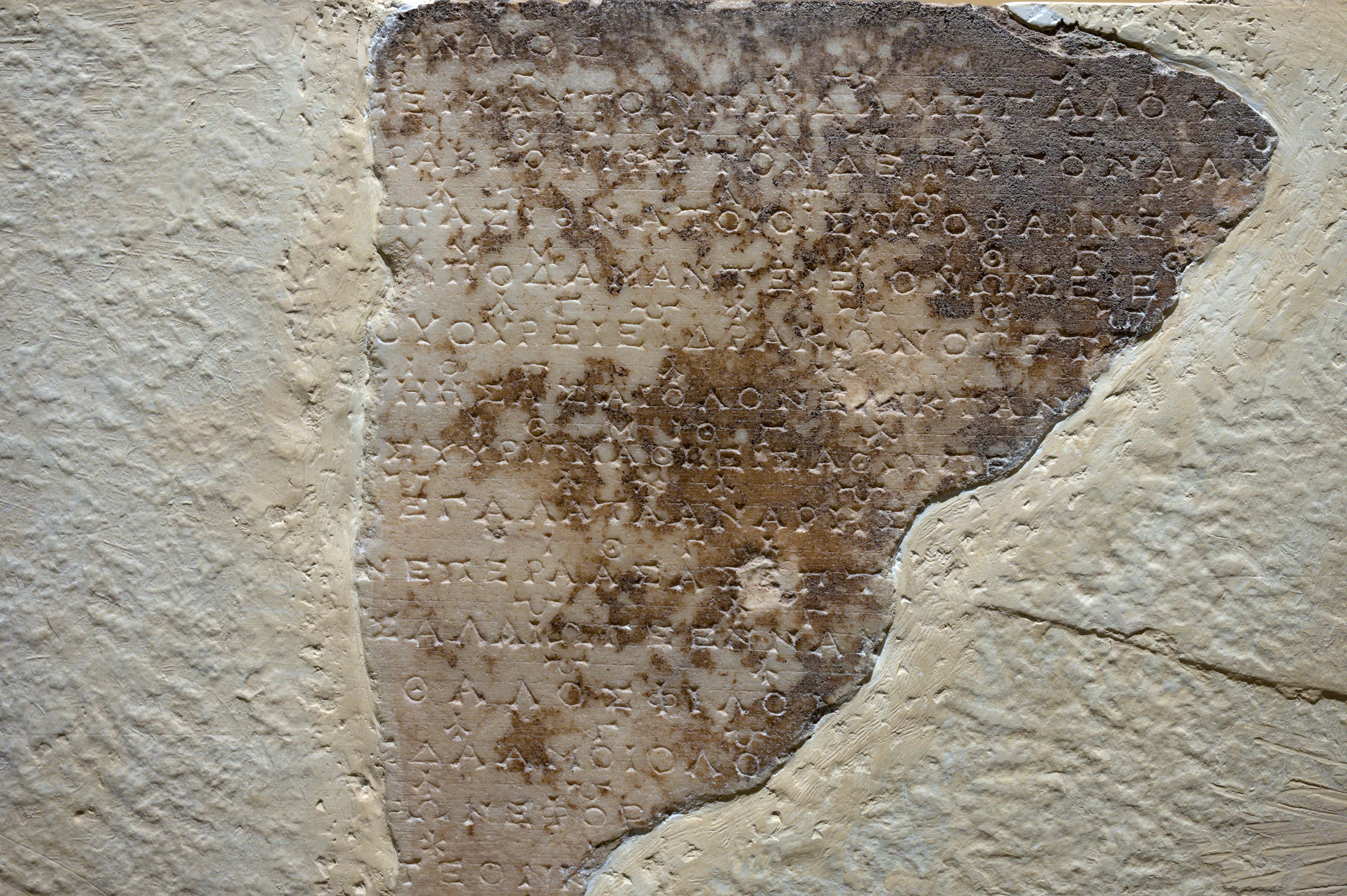
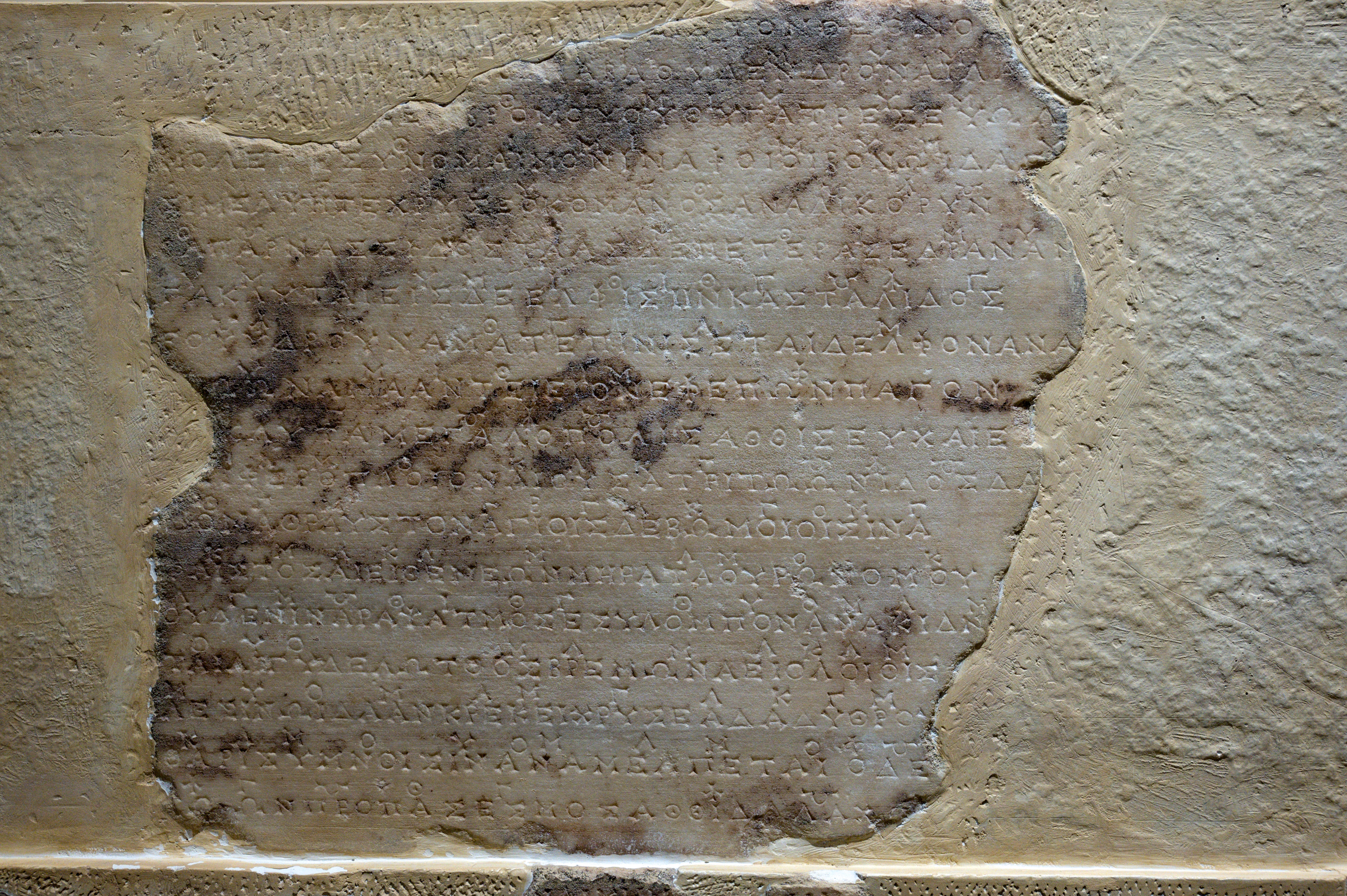
[πα]ιὰ̣ν δὲ καὶ π[ροσό]δ̣ιον εἰς τ[ὸν θεὸν ὃ ἐπό]η̣σε[ν
καὶ προσεκιθάρισε]ν Λιμήνι[ος Θ]ο̣ίνο[υ Ἀθηναῖος]
Ἴτ̣’ ἐπὶ τηλέσκοπον τάνδ̣ε Παρ̣[νασί]αν [φιλόχορον]
δικόρυφον κλειτύν, ὕμνων κα̣[τάρ]χ[ετε δ’ ἐμῶν,]
Πιερίδες, αἳ νιφοβόλους πέτρας ναίεθ̣’ [Ἑλι]κωνίδ̣[ας·]
μέλπετε δὲ Πύθιον χ[ρ]υ̣σεοχαίταν ἕ[κα]τ̣ον εὐλύραν
5 Φοῖβον, ὃν ἔτικτε Λα̣τὼ μάκαιρα πα[ρὰ λίμναι] κ̣λυτᾶι,
χερσὶ γλαυκᾶς ἐλαίας θιγοῦσ̣’ [ὄζον ἐν ἀγωνίαι]ς ἐριθα[λῆ.]
Πᾶ[ς δὲ γ]άθησε πόλος οὐράνιος [ἀννέφελος ἀγλαός·]
10 ν̣ηνέμους δ’ ἔσχεν αἰθὴρ ἀε̣[λλῶν ταχυπετ]εῖς [δρ]ό̣μους, λῆξε δὲ βα-
ρύβρομον Νη[ρέως ζαμενὲς ο]ἶδμ’ ἠδὲ μέγας Ὠκεανός,
ὃς πέριξ γ[ᾶν ὑγραῖς ἀγ]κάλαις ἀμπέχει.
Τότε λιπὼν Κυνθίαν νᾶσον ἐπ̣[έβα θεὸ]ς πρω[τό]καρ-
πον κλυτὰν Ἀτθίδ’ ἐπὶ γα[λόφωι πρῶνι] Τριτωνίδος·
15 μελίπνοον δὲ Λίβυς αὐδὰν χέω[ν λωτὸς ἀνέ-
μελ]πεν [ἁ]δεῖαν ὄπα μειγνύμενος αἰόλ[οις κιθάρι]ο̣[ς
μέλεσιν· ἅ]μα δ’ ἴαχεν πετροκατοίκητος ἀχ[ώ.]
[ὁ] δ̣ὲ̣ γέγαθ’ ὅτι νόωι δεξάμενος ἀμβρόταν
Δι̣[ὸς ἐπέγνω φρέ]ν̣’· ἀνθ’ ὧν ἐκείνας ἀπ’ ἀρ-
20 χᾶς Παιήονα κικλήισκ[ομεν ἅπας] λ̣α̣ὸς αὐ̣τ̣[ο]χθόνων
ἠδὲ Βάκχου μέγας θυρσοπλὴ[ξ ἑσμὸς ἱ]ε-
ρὸς Τεχνιτῶν ἔνοικος πόλει Κεκροπίαι.
Ἀλ̣[λὰ χρησμ]ωιδὸν ὃς ἔχεις τρίποδα, βαῖν’ ἐπὶ θεοστιβ[έα
τάνδε Π]αρναα̣[σ]σίαν δειράδα φιλένθεον.
25 Ἀμφὶ πλόκ[αμον σὺ δ’ οἰ]νῶ̣[πα] δάφνας κλάδον
πλεξάμενος ἀπ[λέτους θεμελίους] ἀμβρόται χειρὶ σύ-
ρων, ἄναξ, Γ[ᾶς πελώρωι συναντᾶις τ]έ̣ραι.
Ἀλλὰ, Λατοῦς ἐρατογ[λέφαρον ἔρνος, ἄγριο]ν παῖδα Γᾶ[ς]
τ’ ἔπεφνες ἰοῖς ὁ[μοίως τε Τιτυὸν ὅτε] π̣όθον ἔσχε μα̣-
τ̣ρὸς [. . . . . . ]
. . . θῆρα κατέκτ[α]ς, οσ[. . .
30 . . . σ]ύριγμ’ ἀπ’ ε[ὐν]ῶν . . .
Εἶτ’] ε̣φρούρε[ις] δὲ Γᾶ[ς ἱερόν, ὧναξ, παρ’ ὀμφαλόν, ὀ βάρ-
βαρος ἄρης ὅτε [τε]ὸν μαντόσυ̣[νον οὐ σεβίζων ἕδος
πολυκυ]θὲς λη<ι>ζόμενος, ὤλεθ’ ὑγρᾶι χι̣[όνος ἐν ζάλαι.
35 Ἀλλ , ὦ Φοῖβε,] σῶιζε θεό-
κτισ̣τον Παλλάδος [ἄστυ καὶ
λαὸν κλεινόν, σύν] τε θεά,
τόξων δεσπότι Κρησίω[ν
40 κυνῶν τ’ Ἄρτεμις, ἠδὲ Λα-
τὼ] κυδίστα̣· [κ]αὶ ναέτας
Δελφῶν τ̣[ημελεῖθ’ ἅμα τέ-
κνοις συμ]βίοις δώμα̣σ̣ιν ἀ-
45 πταίστους Βάκχου [θ’ ἱερονί-
καισιν εὐμε]νεῖς μόλ[ε]τ̣ε
προσπόλοισ<ι>, τάν τε δορί-
σ̣[τεπτον κάρτει] Ῥωμαίω[ν]
ἀρχὰν αὔξετ’ ἀγηράτωι
θάλλ̣[ουσαν φερε]νίκαν.
Title: The paian and p[roso]dion to [the God which] Limeni[os, son of Th]oinos,
composed [and accompanied on the lyre]:
Come here to jutting twin-peaked Mt. Parnassos,
famed for dancing, and conduct my hymns, Muses
of Pieria, who inhabit Helikon’s snow-covered crags.
Sing of Pythian Phoebus, golden hair, far-darting,
5 skilled in the lyre, how blessed Leto bore him by the famous lake,
clutching a thriving shoot of grey-green olive during labour.
The whole heavenly dome rejoiced in cloudless glory
and the air restrained the swift squalls of wind;
Nereus’s powerful breakers stilled their thunder
10 and wide Ocean who encloses earth in a watery embrace.
Leaving the isle of Kynthia the god arrived in Attica,
famous for the first corn, on Tritonis’s craggy slope;
the melodious Libyan flute sang out delightfully
mingling with the lively melodies of the kithara
15 while an echo, latent in the rock, resounded.
And he was pleased because he comprehended
this was Zeus’s divine design. So, from that time on
we, the whole native Athenian population, call on Paieon
as do the great thyrsos-stricken holy company
20 of Bakchos’s Singers living in the city of Kekrops.
So you who hold the seat of divination, come
to this Parnassian ridge trodden by the god, filled with his divinity.
Having crowned your glossy hair with laurel,
while hauling massive stones with godly hand
25 you challenged, Lord, the enormous, earth-born monster.
But, child of Leto with lovely eyes, you shot the savage child
of Earth with arrows, and likewise Tityos when he lusted
for your mother…
… you killed the beast…
30 … a hissing from its den.
Then, Apollo, you protected Earth’s sacred navel, when
a foreign army brought sacrilegious plunder to your wealthy
seat of prophecy but perished in a storm of freezing rain.
O Phoebus, save Athena’s city
35 which was founded by the gods,
its famous people, with the help
of Artemis, Mistress of archery
and Cretan hounds and world-famous
40 Leto. And keep the citizens
of Delphi and the children in their houses
safe from trouble, come kindly
to the victorious servants of Bakchos’s,
increase the spear-crowned power of the Romans,
45 prosperous with victory, through ageless strength.
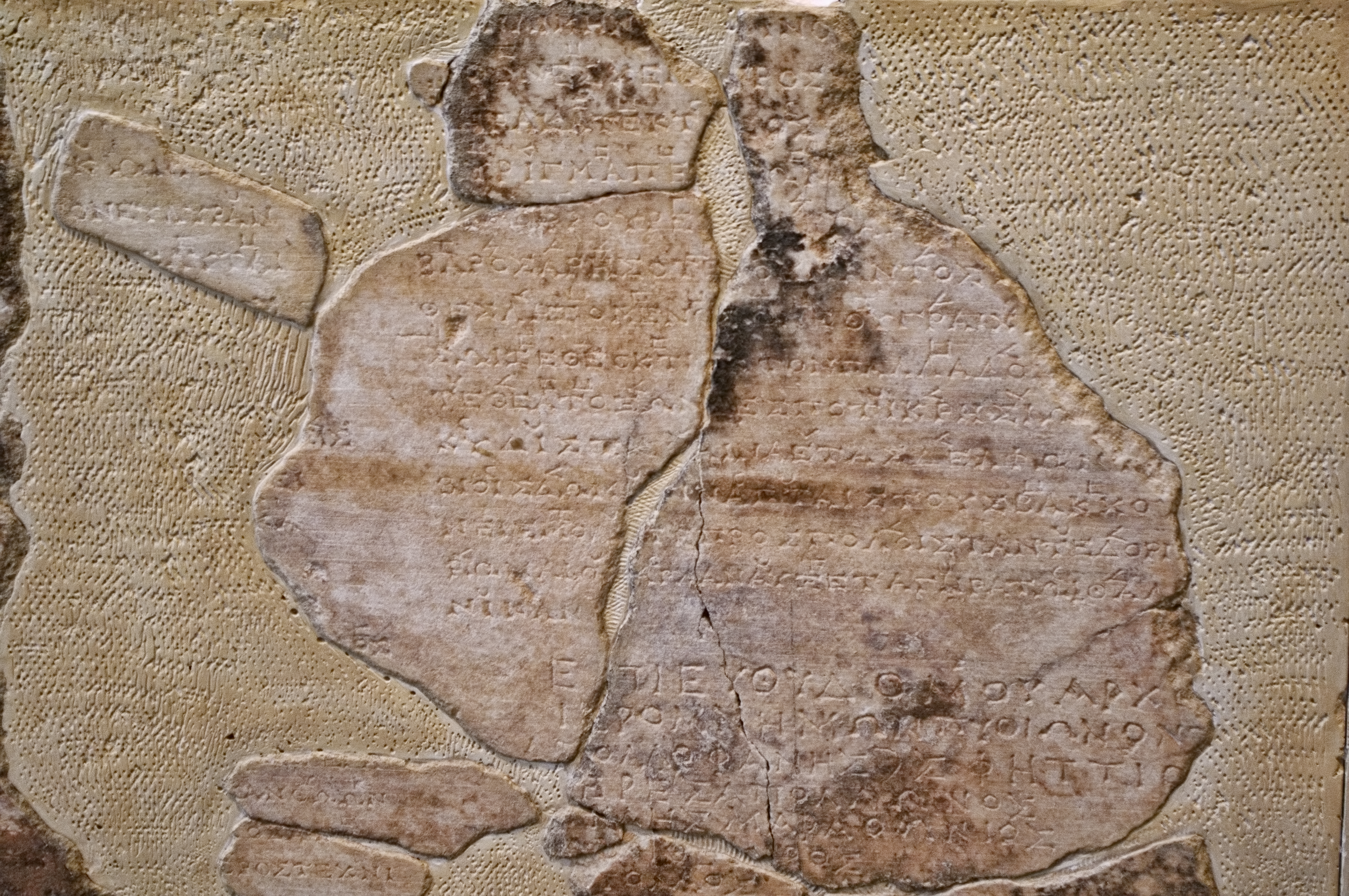
3. Historical context
4. The content of the Hymns: myth, cult, propaganda
| Athenaeus’s Paean | Limenius’s Paean | ||
| lines | Theme | lines | Theme |
| 1–7 | Invocation to the Muses and Apollo | 1–3 | Invocation to the Muses and Apollo |
| 4–10 | Birth of the god | ||
| 8–18 | Celebration of Athens and the sacred procession with the Technitai | 11–17 | Apollo leaves Delos and arrives in Attica |
| 17–20 | First celebration of Apollo (invention of the Paean) by the Technitai | ||
| 19–23 | Narrative section on the victory of Apollo over Python and the Gauls | 21–33 | Address to Apollo and narrative section on the victory of Apollo over Python, Tityos and the Gauls |
| 24 | New address to Apollo (the fragment is interrupted) |
34–46 | Closing prayer and address to Leto, Artemis, and Apollo to protect Delphi, Athens, the Technitai, and the Romans |
5. Musical notation and modern performances

